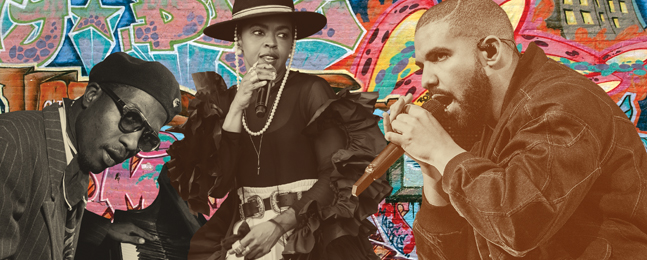Fantasy Worlds, Global Pandemics and Other Cool Subjects

by Lawrence Goodman
Imagine a class in which you read an Ursula K. Le Guin “Earthsea” novel, watch a “Lord of the Rings” movie and create your own LARP (live-action role-playing) game.
Or play a board game called Pandemic, then compare the strategic decisions you made as a player with real-life attempts to stop the spread of infectious diseases.
Or listen to Drake and write rap lyrics.
Last semester, among the nearly 1,000 classes Brandeis students signed up for, some course offerings seem especially quirky and cool. Here are a few examples.
The syllabus for Fantasy Worlds: From Lilliput and Middle Earth to LARPs, taught by John Plotz, the Barbara Mandel Professor of the Humanities, kicks off with “A True Story,” a novel from second-century Greece about an outer-space battle between the kings of the sun and moon, and a voyage to an island of cheese. Students move on to the epic “Gilgamesh”; “Hansel and Gretel”; stories by Mark Twain, Franz Kafka and Oscar Wilde; and works by contemporary writers Gabriel García Márquez and the Afrofuturist N.K. Jemisin. An entire unit is devoted to the role-playing game Dungeons & Dragons, a warm-up for students, who then design their own tabletop or app-based fantasy world, or create a LARP for others to play.
In Advocacy for Policy Change, role-playing of a different sort happens. At the start of the semester, small groups of students select a bill before the Massachusetts state legislature to support or oppose. Each group interviews people affected by the proposed law, talks with relevant community organizations, writes Op-Eds, develops a 30-second elevator pitch for government officials, and meets face to face with legislators and legislative aides.
Four years ago, computer scientist Pito Salas ’76, professor of the practice, hatched the idea for Autonomous Robotics: Students would build a robot able to navigate hallways, ride elevators, find offices, take commands and drop mail in the right baskets. Because the rover can’t be built in a single semester, each successive class tries to solve a different technical problem before handing the baton to the next year’s students. The class combines programming with applied engineering.
In anthropologist Elanah Uretsky’s class Global Pandemics: History, Society and Policy, students play the board game Pandemic to learn how to harness research, medical treatments and other measures to combat infections spreading across the globe, then compare their game strategy with actions taken by governments in the past. The class explores why America was so unprepared for COVID-19 and whether the rift in U.S.-China relations made the pandemic worse.
Hip-Hop History and Culture examines the music genre’s African roots and reliance on artists like blues singer Bessie Smith and jazz pianist/composer Thelonious Monk. Chad Williams, the Samuel J. and Augusta Spector Chair in History and professor of African and African American studies, assigns playlists featuring such artists as Kendrick Lamar and Drake, as well as YouTube videos from Cardi B, Megan Thee Stallion and Lil Nas X. Guest lecturers have included hip-hop icon KRS-One and recording engineer Prince Charles Alexander ’79, who’s worked with the Notorious B.I.G. and Usher. Students are asked to write rap lyrics and create a work of graffiti based on a hip-hop name they give themselves.
Last semester, students in the Virus Hunter Lab discovered two new strains of bacteriophages, a type of virus that infects bacteria, and wound up co-authoring an academic journal article about their findings. The students purified, amplified and sequenced the virus’s DNA, which was found in a scoop of bacteriophage-rich Cape Cod marsh water collected by biologists Michael Marr and Susan Lovett. The course’s second half focused on bioinformatics to help students identify the virus’s genes.
Finally, in The Social Fabric: An Anthropology of Fashion, students look at how the seemingly simple question — what will I wear today? — is influenced by forces operating around the globe. The class discusses labor conditions in developing countries where clothes are made; studies how the clothes thrown away by Americans wind up in Africa and Asia, influencing culture, politics and the economy there; and analyzes the effects of race, class and gender on clothing design. “Fashion is a lot more complex than what we imagine,” says assistant professor of anthropology Patricia Alvarez Astacio, who teaches the course. “Every piece of clothing you put on has a kind of cultural meaning that lets someone else read who you are.”
